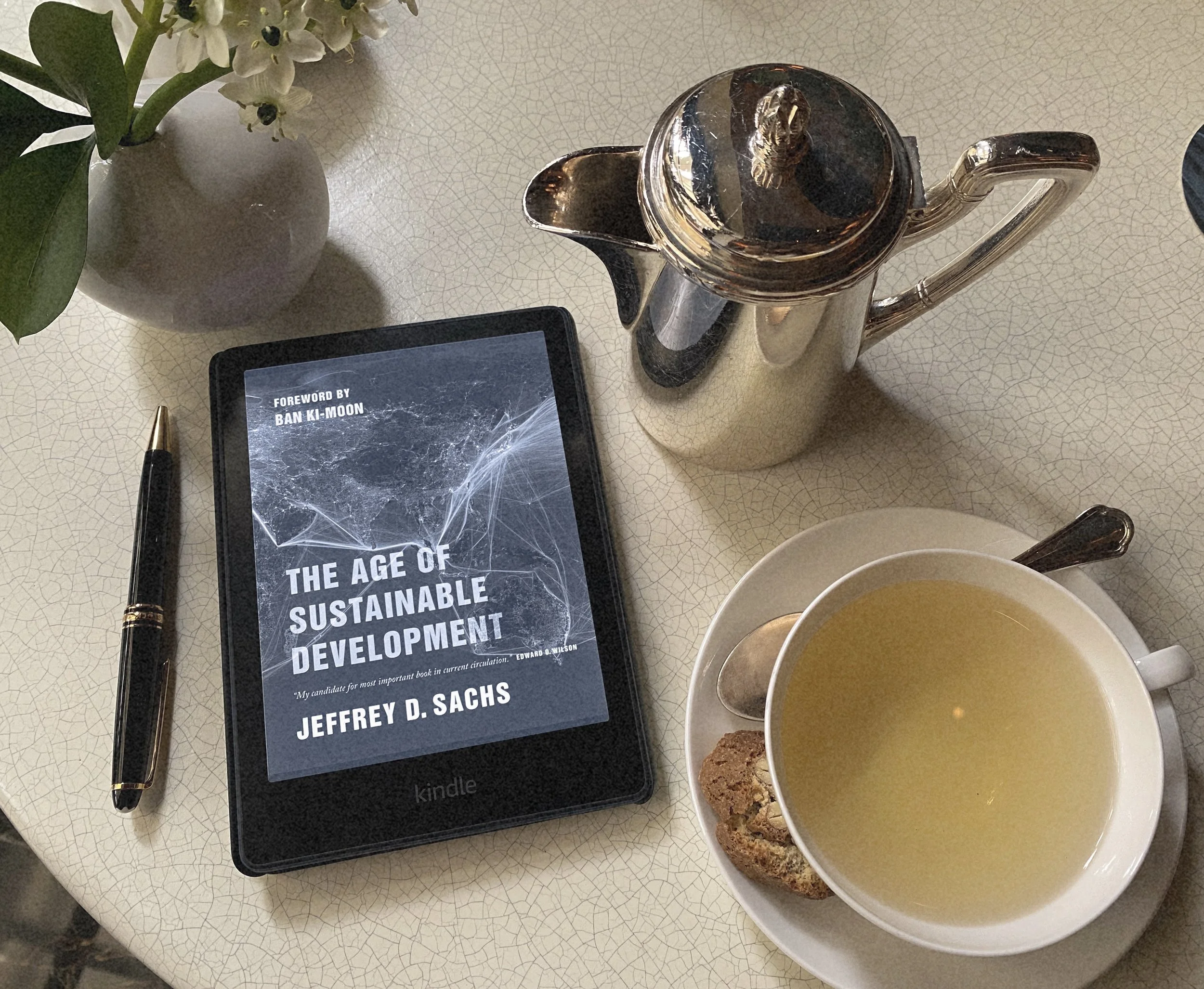The Age of Sustainable Development
In States of Disarray: The UN at 80, The Economist’s Anton La Guardia sketched three scenarios for the United Nations’ future: a more independent UN, a decaying UN, or a “Trumpified” UN. Against this backdrop of uncertainty, Jeffrey Sachs’s The Age of Sustainable Development (2015) reads as both a roadmap and a warning. Published the same year the UN adopted the 17 Sustainable Development Goals (SDGs), the book outlines pathways to achieve global progress in economic development, social inclusion, and environmental sustainability—while acknowledging the immense challenges that remain. Ten years later, Sachs’s analysis retains striking relevance, particularly as climate change, inequality, and political fragmentation intensify.
Sachs begins with the premise that societies have not reconciled the economic growth with environmental sustainability. The pressures on ecosystems, oceans, and climate systems remain acute. His framing captures the central paradox of our time: how to balance rising prosperity with planetary limits. This theme runs throughout the book, making it not only a work of economics but also of moral philosophy.
A key contribution of the book lies in its discussion of widening inequalities. Sachs identifies three forces driving disparities across the U.S., Europe, and emerging economies: the growing premium on education, technological change favoring capital over labor, and structural disadvantages faced by landlocked economies. Particularly compelling is his emphasis on education—especially girls’ education—as a lever to break intergenerational poverty traps. Yet Sachs also highlights how automation and robotics have shifted income toward capital owners, reinforcing inequality. These insights anticipate today’s debates about AI, digital divides, and the uneven distribution of technological gains.
Financing development emerges as another recurring theme. Sachs describes two avenues: borrowing for public investment, to be repaid by future growth, or receiving temporary external assistance from governments, businesses, and international institutions. He stresses the role of Official Development Assistance (ODA) and situates development within cultural contexts. His reflections on culture as a determinant of economic pathways were particularly thought-provoking and led me to consider more deeply how cultural norms shape progress toward the SDGs.
The book also situates demographic trends at the heart of development. Countries that transition from high to low fertility, Sachs notes, tend to enjoy faster economic growth. Yet as The Economist has recently argued, the global population may peak and shrink sooner than expected, raising new uncertainties for labor markets, migration, and social welfare. Sachs’s analysis of gender equality further underscores that attitudes toward women vary widely across regions, profoundly shaping development trajectories. He identifies sub-Saharan Africa and South Asia as the regions most in need of breakthroughs, a point that remains pressing today.
Perhaps the most distinctive section of the book is Sachs’s treatment of ethics. He surveys traditions ranging from virtue ethics (Buddha, Confucius, Aristotle) and religious morality (the Golden Rule), to Kantian duty ethics, utilitarianism, libertarianism, and modern human rights. By linking sustainable development to philosophical traditions, Sachs reminds readers that policy choices rest on ethical foundations. The pursuit of universal basic needs, whether justified through human rights or utilitarian logic, ultimately requires societies to articulate and debate their values. For me, this emphasis on ethics underscored the need for public dialogue about the moral underpinnings of the SDGs.
The thematic chapters on health, cities, and climate change provide empirical grounding. Chapter 9, on health, illustrates how modest income gains in poor countries translate into steep improvements in life expectancy, while rich countries face rising healthcare costs. Chapter 11 explores the promise of resilient cities, noting that urban infrastructure can deliver both productivity and sustainability if investments are wisely directed. Chapter 12 on climate change is sobering: despite decades since the Rio Earth Summit, emissions remain high. Sachs concludes that while solutions exist, humanity lacks the political will and urgency to act—a conclusion that resonates even more strongly in 2025.
Where Sachs is most persuasive is in his optimism. He argues that extreme poverty could be ended within a generation, perhaps by 2030 or 2035, if sound policies and global cooperation are pursued. This claim, though utopian at first glance, rests on evidence from countries that have already lifted millions out of poverty. Yet reading this today, amid pandemic setbacks, geopolitical rivalries, and financing shortfalls, raises doubts about whether such timelines are still realistic. Sachs’s framework remains valuable, but implementation has proven elusive.
Ultimately, The Age of Sustainable Development is both a scholarly overview and a call to action. Its strength lies in weaving together economics, ethics, culture, and ecology into a coherent vision. At the same time, the book reflects the optimism of the mid-2010s, a moment when global consensus around the SDGs seemed within reach.
Looking ahead, the upcoming 2026 selection of the next UN Secretary-General will be pivotal. The choice of leadership could tilt the organization toward one of the scenarios La Guardia described: greater independence, gradual decline, or politicized fragmentation. In that sense, Sachs’s framework offers not only an academic roadmap but also a practical reminder of the moral and policy choices awaiting the UN’s next generation of leaders.
Today, as the UN itself faces questions about its future, Sachs’s message is even more urgent: sustainable development is not simply a technical exercise but an ethical project that depends on collective choices.

